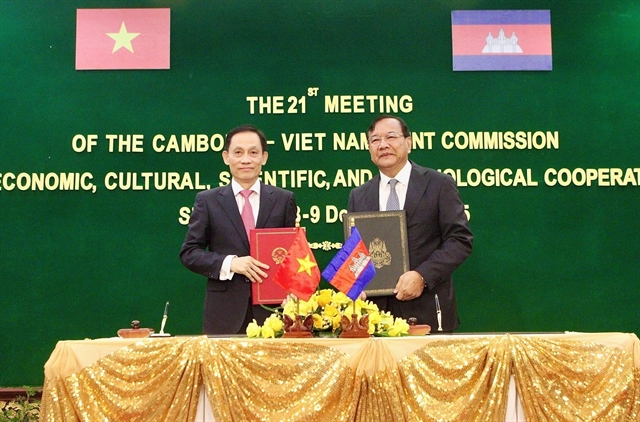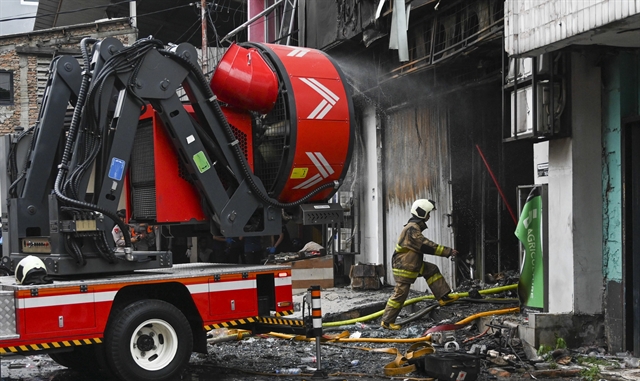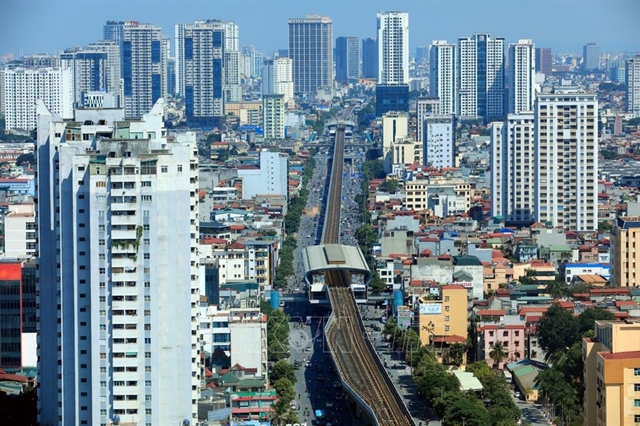 Economy
Economy

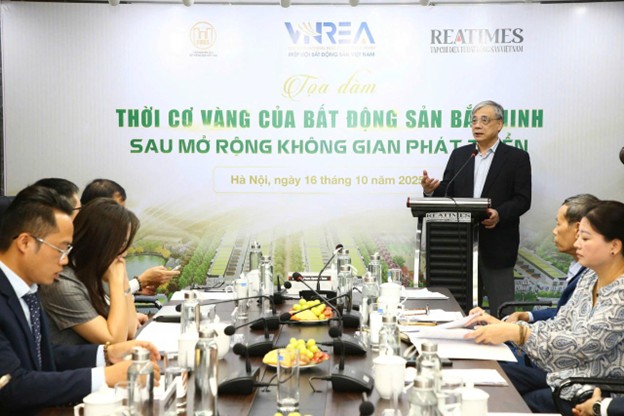
|
| A seminar on opportunities of the Bắc Ninh real estate market after expanding space that was held on October 16. — Photo baophapluat.vn |
HÀ NỘI — Experts believe Bắc Ninh’s real estate market is poised for significant growth, driven by its diverse range of property segments and expanding urban space.
This outlook was shared at a seminar on the opportunities in Bắc Ninh’s property market following recent spatial expansion, held on October 16 by the Vietnam Real Estate E-Magazine and the Vietnam Real Estate Research Institute.
Market surveys show several segments are attracting strong investor interest, including satellite and new urban areas along key transport corridors, as well as housing for experts, engineers and workers in growing industrial parks.
Other promising segments include commercial, service and logistics real estate linked to major industrial zones, alongside smart urban projects and modern residential developments catering to a rapidly urbanising population.
Experts predict that land and townhouse property in well-planned, legally transparent urban zones – particularly in satellite areas – will continue to lead Bắc Ninh’s market in the coming years.
They added that the period from 2025 to 2030 will be crucial for Bắc Ninh to reposition its real estate market. As property prices surge in central areas, individual investors are increasingly channelling capital into outlying districts where land remains more affordable and growth potential higher.
Investors are especially targeting land plots, commercial townhouses and urban development projects in suburban districts offering reasonable entry prices.
The scarcity of land in central Bắc Ninh, combined with high population density, has made satellite urban areas an important solution for population redistribution, investment dispersal and balanced regional development.
Investment hotspots
Key districts such as Tân Yên, Yên Phong, Tiên Du, and Thuận Thành are emerging as investment hotspots due to rising land values and high liquidity.
Forecasts indicate that property values in infrastructure-enhanced areas could grow by an average of 10–15 per cent annually between 2025 and 2030.
Anticipating this shift and investor demand, many developers are fast-tracking projects and preparing to introduce new real estate products with clear legal status.
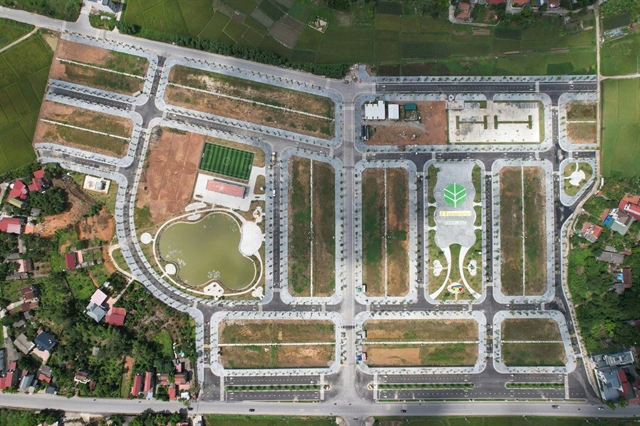
|
| Bắc Cao Thượng Residential Area project. — Photo reatimes.vn |
A notable example is the Bắc Cao Thượng Residential Area (commercially known as Hawee Parkland Cao Thượng), located in Tân Yên and developed by Hawee Real Estate Joint Stock Company.
This project includes land plots and townhouses and offers more than 30 internal amenities such as a central square, lake park, sports facilities, community areas, a clubhouse and a commercial centre, designed to meet both residential and business needs.
Strategically situated on National Highway 17 in the centre of Tân Yên Commune, the project provides excellent inter-regional connectivity. With over 95 per cent of infrastructure completed, it is scheduled for handover in the third quarter of 2025.
Associate Professor Dr Trần Đình Thiên, a member of the Prime Minister’s Policy Advisory Council, remarked that the merger of Bắc Ninh and Bắc Giang has created a ‘new Bắc Ninh’ with a transformed status and immense growth potential.
He noted that Bắc Ninh has achieved ‘miraculous growth’, with all economic indicators on the rise. The province’s economic scale now ranks fourth nationally, with a total area of 4,718 square kilometres. This positions Bắc Ninh as a key economic force offering new strengths and opportunities.
The combined scale and strength of these two industrial hubs – already major FDI magnets – create favourable conditions to attract global tech corporations. Bắc Ninh is increasingly recognised as an industrial and logistics capital poised to replace other localities in regional leadership.
Located in the Capital Region, Bắc Ninh enjoys dual advantages for urban and real estate development. The province is traversed by national highways and its urban planning must strike a balance between technological advancement and the preservation of cultural identity.
Strategic infrastructure
In the new era, Bắc Ninh possesses strategic assets shaping its long-term development. These include the Gia Bình International Airport, envisioned as the region’s leading airport, Capital Region belt highways enhancing transportation connectivity, and a comprehensive ecosystem of hi-tech industrial parks attracting major global investors.
“Bắc Ninh’s future lies in transitioning from traditional manufacturing to digital and smart industries aligned with the Fourth Industrial Revolution,” said Associate Professor Dr Nguyễn Quang Tuyến, Vice Chairman of the University Council and Head of Economic Law at Hanoi Law University.
He emphasised the need to move beyond low-value processing and towards industries that incorporate intellectual content and innovation.
For example, although Việt Nam assembles 60 per cent of Samsung’s global phones, the value retained domestically remains limited. He stressed that urban development should also aim for green and sustainable growth, balancing rapid expansion with environmental protection.
Bùi Văn Doanh, Director of the Vietnam Real Estate Research Institute, highlighted the ongoing trend of capital shifting towards satellite areas in the newly merged Bắc Ninh. Among these, Tân Yên and Nhã Nam stand out as high-potential zones.
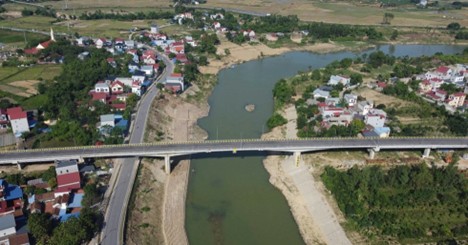
|
| A view of Tân Yên, Bắc Ninh Province. |
Tân Yên is adjacent to Việt Yên, a major industrial district with a large labour force. This proximity positions Tân Yên as an ideal location for worker housing and supporting infrastructure. The district is also well placed along the future Ring Road 5 of Hà Nội, boosting prospects for logistics hubs, industrial parks and satellite cities.
According to the 2030 development plan, Tân Yên is set to host five industrial parks – Phúc Sơn, Thượng Lân-Ngọc Thiện, Ngọc Lý, Quế Nham, and Ngọc Thiện – as well as eight industrial clusters totalling more than 1,100 hectares.
Currently, one park and four clusters have been completed. The area still boasts a vast land fund, presenting a major opportunity as neighbouring localities face land scarcity. — VNS

